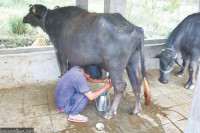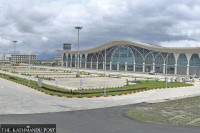National
Over 1,100 families left Gulmi in last fiscal year
Observers warn that if migration continues unchecked, many villages in Gulmi, a hill district of Lumbini Province, could soon be left nearly deserted.
Post Report
The steady exodus from Gulmi district continues, driven largely by foreign employment opportunities and the search for better facilities in urban centres. Despite improvements in road connectivity, education, drinking water and healthcare in villages, the migration trend shows no sign of slowing.
Adding to the push factors, frequent crop losses due to wild animals such as monkeys and wild boars have made traditional agriculture less viable.
According to data from the local municipalities, a total of 1,174 families—comprising 4,025 individuals—formally obtained migration certificates and left the district in the last fiscal year of 2024-25.
Officials say the actual number of migrants is far higher, since many relocate without securing certificates, which means the official figures reflect only part of the reality.
Musikot Municipality recorded the highest number of departures, with 159 families registering for relocation. This was followed by Chandrakot with 137 families, Satyavati with 123, Kaligandaki with 111 families, and Resunga with 82 families.
Other municipalities such as Rurukshetra, Chhatrakot, Gulmidarbar, Dhurkot, Isma, Malika and Madane also reported significant out-migration.
Despite mounting concern over depopulation in rural villages, local governments and policymakers have shown little interest in addressing the social and economic impacts of this trend.
Observers warn that if migration continues unchecked, many villages in Gulmi, a hill district of Lumbini Province, could soon be left nearly deserted.




 6.12°C Kathmandu
6.12°C Kathmandu














